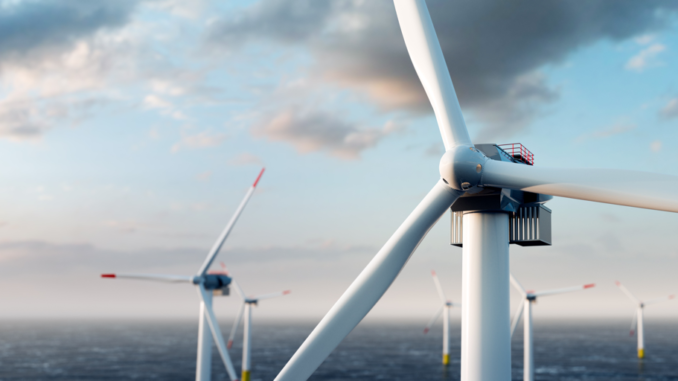
The global energy landscape is undergoing significant changes in 2024, driven by technological innovation, policy shifts, and an urgent need to address climate change. This article delves into the latest developments, trends, and challenges shaping the energy sector today.
Rising Global Energy Demand
Economic Growth and Urbanization
As economies recover from the pandemic, energy demand is surging. Urbanization in developing countries, especially in Asia and Africa, is a major driver of this increase. Cities are expanding, industries are growing, and more people are gaining access to electricity.
Regional Consumption Patterns
Energy consumption is highest in the Asia-Pacific region, followed by North America and Europe. Emerging economies are seeing the fastest growth in energy needs, putting pressure on global supply chains and infrastructure.
Shifts in Energy Sources
Fossil Fuels
Fossil fuels still account for a significant portion of global energy production. However, their dominance is waning due to environmental concerns and the transition to cleaner alternatives.
Oil Market Fluctuations
The oil market remains volatile. Geopolitical tensions, production cuts by major producers, and the shift towards electric vehicles are contributing to unpredictable price swings.
Natural Gas as a Bridge Fuel
Natural gas is increasingly seen as a transitional energy source, bridging the gap between coal and renewables. Its lower carbon emissions make it a preferred choice for countries looking to reduce their carbon footprint.
Decline of Coal
Coal is in decline, driven by stringent environmental regulations and the economic competitiveness of renewable energy. Many countries are phasing out coal plants in favor of cleaner alternatives.
Renewable Energy Surge
Solar Power Dominance
Solar power continues to break records in 2024. Technological advancements and decreasing costs have made solar energy more accessible and affordable, leading to widespread adoption in both developed and developing nations.
Wind Energy Growth
Wind energy, particularly offshore wind farms, is expanding rapidly. Countries with extensive coastlines are investing heavily in wind power to diversify their energy portfolios and reduce reliance on fossil fuels.
Hydroelectric Power
Hydroelectric power remains a cornerstone of renewable energy. Large-scale projects, especially in China and Brazil, are contributing significantly to global electricity generation.
Nuclear Energy’s Role
Nuclear energy provides a stable and low-carbon power source. However, high costs, public opposition, and concerns about nuclear waste continue to pose challenges. Despite this, several countries are investing in next-generation nuclear technologies.
READ MORE : GPT-4o: The Next Evolution in Artificial Intelligence
Technological Innovations in Energy
Advancements in Energy Storage
Energy storage technologies, such as lithium-ion batteries and emerging alternatives, are crucial for balancing supply and demand. Innovations in this field are enhancing the reliability and efficiency of renewable energy systems.
Smart Grids and Digitalization
Smart grids and digital technologies are transforming the energy sector. These systems improve energy management, reduce losses, and integrate renewable energy sources more effectively.
Hydrogen Economy
Hydrogen is gaining attention as a versatile and clean energy carrier. Green hydrogen, produced using renewable energy, is seen as a potential game-changer for industries that are difficult to electrify.
Policy and Regulatory Developments
Global Climate Agreements
Global climate agreements, such as the Paris Agreement, are driving policy changes worldwide. Countries are setting ambitious targets for reducing greenhouse gas emissions and increasing renewable energy capacity.
Carbon Pricing and Emissions Trading
Carbon pricing mechanisms and emissions trading systems are being implemented to incentivize the reduction of carbon emissions. These policies are encouraging businesses to adopt cleaner technologies and practices.
Government Incentives and Subsidies
Governments are offering incentives and subsidies to promote renewable energy adoption and energy efficiency measures. These policies are critical for accelerating the transition to a sustainable energy future.
Challenges and Opportunities
Energy Security
Ensuring energy security is a major concern, particularly for countries heavily reliant on energy imports. Diversifying energy sources and investing in domestic production are key strategies for enhancing energy security.
Infrastructure Development
Upgrading and expanding energy infrastructure is essential to meet growing demand and integrate renewable energy. This includes building new power plants, transmission lines, and energy storage facilities.
Economic and Social Impacts
The transition to a low-carbon energy system has significant economic and social implications. Job creation in renewable energy sectors, along with potential job losses in fossil fuel industries, presents both challenges and opportunities.
Conclusion
The global energy landscape in 2024 is characterized by dynamic changes and significant challenges. As the world moves towards a more sustainable and resilient energy future, the ongoing transformations in energy sources, technologies, and policies will play a crucial role in shaping our planet’s future.
Leave a Reply